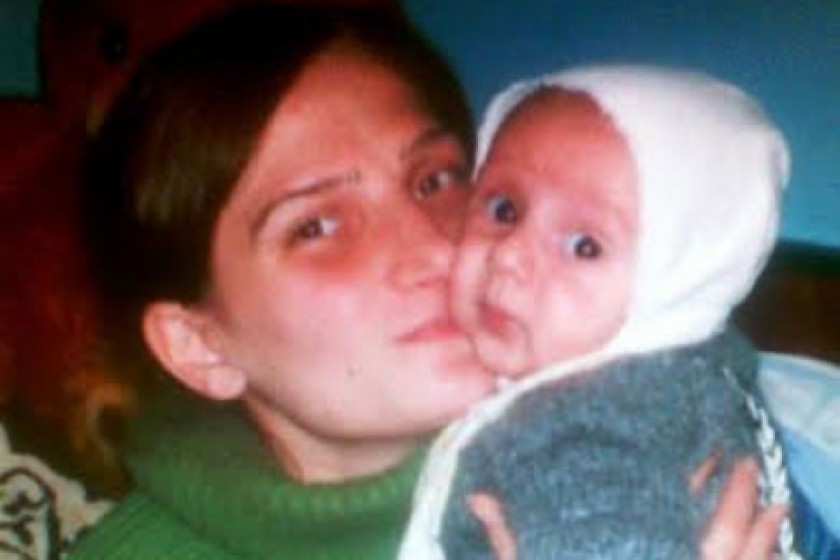
Conditional Release Program Doesn’t Work; Says Father Who Hasn’t Seen His Son
Four years ago Anahit Mkhitaryan decided to marry Aram Gasoyan, who has already served ten years of a fourteen year sentence for murder.
In the top photo, Anahit is holding their new born son Arthur. The boy, who turns three in a few months, has never seen his father.
Anahit told Hetq that she is now expecting her second child, but confessed that the joy is mixed with sadness since her husband isn’t at her side.
Aram, who is serving out his sentence at the Kosh Correctional Facility, came up for conditional release two years ago. But an administrative panel has turned down his appeal seven times and has failed to present his case before an independent parole committee.
In a letter to Hetq, Aram wrote a bit about himself and his family, adding that prison procedures for early parole are rife with violations.
He says he was taken aback when he heard a psychologist who sits on an independent parole panel, mention the eligibility requirements for conditional release during a TV program.
Ruben Aghouzoumtsyan, the psychologist, had said that priority is given to those prisoners who have started a family, have children, and who have no previous arrest record.
“That’s the type of convict my husband is, but they keep rejecting his application,” exclaimed Anahit, adding that she and her young son are forced to live with relatives because there is no breadwinner in the family.
“My son will soon turn three and I want to enroll in kindergarten. This way, I’ll have time to find some work. But everywhere I go they reject me, saying they don’t have any open spots,” Anahit says.
The young mother says that if they will not grant her husband conditional release, they should at least transfer him to a low-level security facility where they can meet more often and where Aram will be able to work.
“Who gains from keeping a model prisoner cooped up in prison? I don’t understand it,” Anahit says.
Aram Gasoyan is one of the many convicts who complain about the parole procedure. He notes that the system doesn’t work and that there are no definite criteria for granting conditional release.
Another convict, Rouben Amatouni, also has written to Hetq with the same concerns.
Amatouni has estimated the costs to the state budget when prisoners remain behind bars due to the breakdown in parole procedures.
“It costs the state 4,000 AMD ($9.70) per day to keep one prisoner in a correctional facility. They have kept me behind bars seven months too long. Do the math. That works out to 800,000 AMD they have spent to keep me here. What about the scores of other model prisoners like me who haven’t been granted conditional release? The amounts being spent are staggering,” writes Amatouni.
“I have two years and one month to serve on my sentence. That translates into another 3 million AMD the state will have to pay in upkeep,” he adds.
Prisoners like Gasoyan and Amatouni argue that the problem lies outside the Department of Corrections and that certain clauses in the Criminal Code are purposely not being enacted.
They say it’s an unwritten law, but they can’t specify the source.
Hetq contacted the Department of Corrections and asked on an average yearly basis how many convicts are presented before independent parole panels for conditional release based on the clauses noted above.
Their answer was that the department didn’t keep such figures.
Hetq has since contacted several independent parole panels with the same inquiry.
 Videos
Videos Photos
Photos
Comments (3)
Write a comment